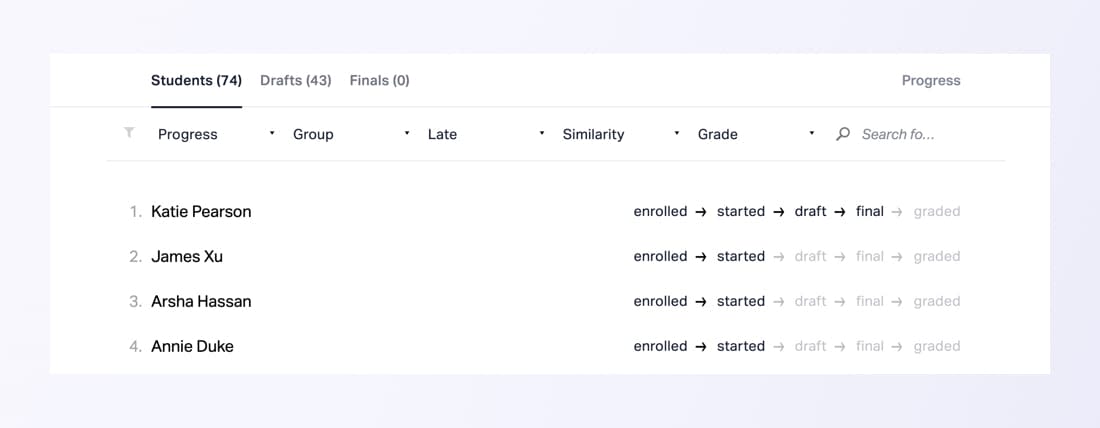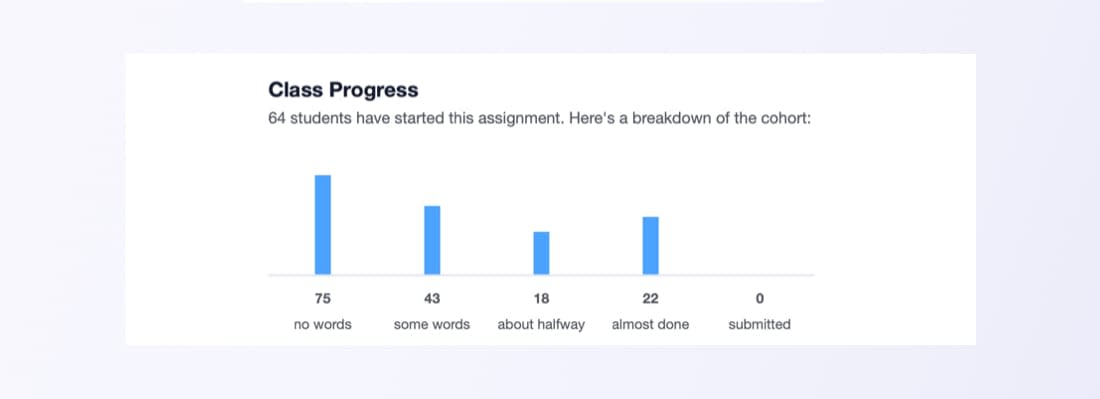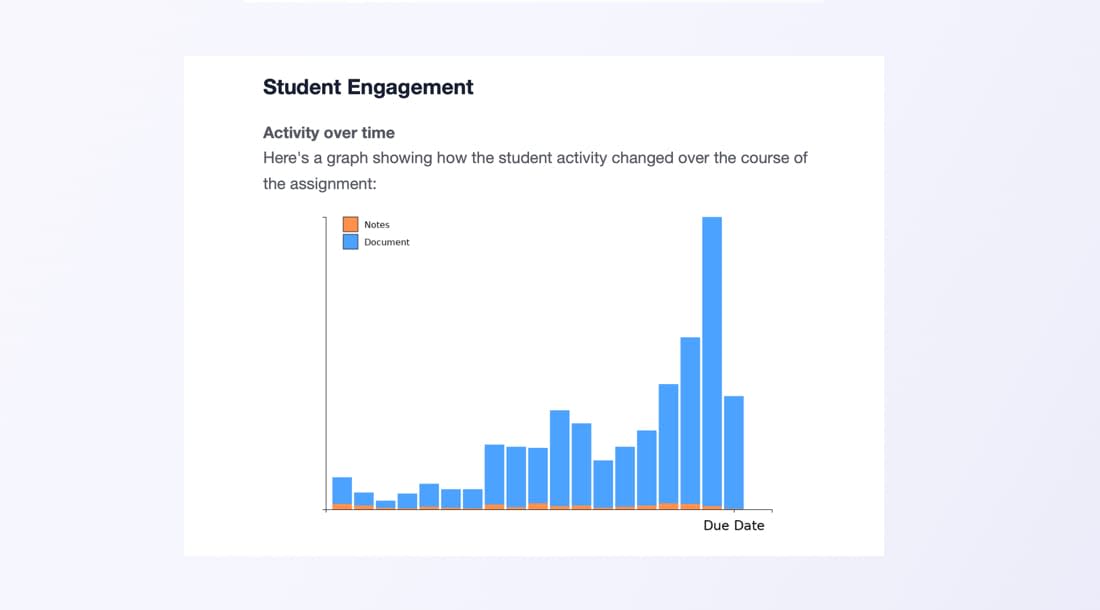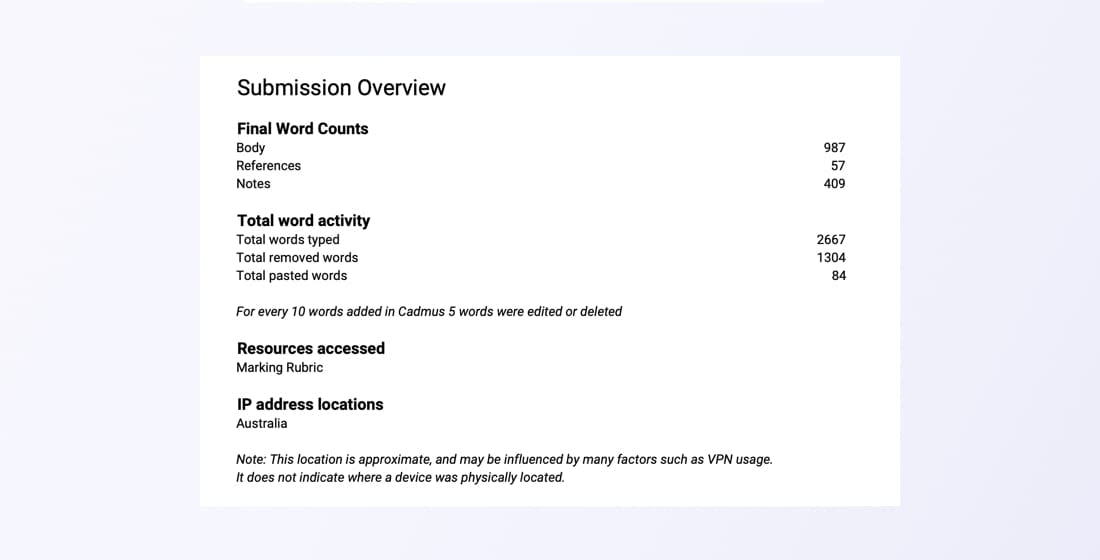News
How we use data at Cadmus

Share with colleagues
Download the full Case Study
Take an in-depth look at how educators have used Cadmus to better deliver assessments.
Teachers use Cadmus for a range of reasons, including the ability to take their assessments online. Being online opens up opportunities for both teachers and students, including the ability to collect data throughout the assessment process. Over the years, we've grown to understand how our data can be used to improve the assessment process; helping us define the principles that underpin the data-related decisions we make. These principles influence the data we collect, how we share it with users, and how we use it internally.
With our vision to create better learning experiences at university, it only follows that the purpose of our data is to empower teachers to improve their assessment designs and teaching practices. Equally, we see data as a way to help students understand, and enhance, the way they learn. As data becomes more integrated into the Cadmus experience, we want our users to understand the role it plays throughout the entire assessment process. We also want students to feel confident that they'll be assessed fairly and honestly across every Cadmus Assignment.
Ultimately, this comes down to trust; trust between students and teachers, and trust between our users and Cadmus. And for us, trust means transparency. That's why we're being completely open with you about the data we collect and how we use it—so you can feel comfortable using Cadmus from the very beginning.
Let's start by clearing up a few misconceptions
The Cadmus product today has evolved significantly from what it was a few years ago—especially when it comes to data. At Cadmus, we take a teaching and learning approach to academic integrity, which means we want to enable teachers to create authentic assessments that support student learning. We want to “situate academic integrity practices within the goal of improving student learning” (Bertram Gallant, 2017), shifting the focus from investigating academic misconduct to enhancing student learning. Because of this, we've simplified the data we collect.
Cadmus no longer collects keystroke or typing information, nor does it profile students in any way. The tool does not detect plagiarism, and there are no conclusions made about the authenticity of student work.
So what data does Cadmus collect?
When students complete a Cadmus Assignment, we collect data about how it is being accessed. This is similar to the data collected by most websites when you browse the internet.
This includes:
- browser type (e.g. Chrome, Safari etc.)
- operating system (e.g. Mac OS X)
- IP address
The only information collected about the identity of a student is through the Learning Management System. Specifically, we collect their full name and university email address.
Below is an example of student names being used in a class list.

When students work in the Cadmus Student Environment, information is collected about the actions they take.
This includes activity such as:
- typing in the Notes or Work space
- pasting in external content
- accessing resources attached to the assignment
- looking at articles in Cadmus Manual.
Below is an example of how word count data is presented to educators at class level.

Once an assessment is complete, Cadmus collects data related to grades and feedback.
More specifically, we collect:
- a student's final mark for an assignment
- if students access feedback in Turnitin Feedback Studio once grades are released.
How is this data used?
It's important to note that while we collect this information, it's not all readily available to teachers. There are two ways that Cadmus shares data with teachers:
Learning Analytics
Learning Analytics refers to cohort-level data shared with teachers to help them understand how the class is engaging with an assessment. They give teachers an overview of class progress and insight into how assessments are completed.
For example, this includes data such as:
- the number of students that have started writing
- the average time spent on the task across the class
- the percentage of the class that have accessed resources
- the percentage of the class that viewed feedback in Turnitin Feedback Studio
Many teachers share this information openly in class to motivate their students and support them to develop better learning practices.
Below: an example of class activity in the Notes and Work sections over the course of an assessment.

Student Activity Reports
Once marking is completed, a teacher may request to view individual student data from Cadmus. If a unit-coordinator suspects academic misconduct, part of their process may involve requesting a Student Activity Report from Cadmus. Activity Reports contain information about how an individual student's piece of work was created in Cadmus. This includes information like:
- the number of words added and deleted over time
- a record of content pasted into Cadmus
- the locations where work was completed (provided at a country level, e.g. Australia)
- the device and browser used used to complete the assignment (e.g. Chrome on Mac OS X).
Below: an example of how data is shared in the Student Log.

This information may form a part of the decision-making process in an academic integrity case, similar to how a Turnitin similarity report would be used. When an Activity Report is shared, the student involved will always be given access to the same information made available to their unit-coordinator.
As we continue to explore new ways of using data to support teaching and learning, we also promise to stay open and transparent about the data we collect and use. If there's any more information you'd like about our data practices, you can refer to our Privacy Policy or get in touch with our team.
Category
Product
More News
Load more
Company
Cadmus Takes First Place in APUC Framework Agreement
We're excited to announce that we have been awarded the first place in APUC’s Framework Agreement. As a result, higher education institutions across the UK can now procure Cadmus through the University of London (CoSector), streamlining the procurement route.
2025-11-28

AI
Leadership
Student Success
Teaching & Learning
The future of assessment in a shifting higher education landscape: Lessons from the Teaching & Learning Forum
Discover how universities across Australia are reimagining assessment to foster integrity, authenticity, and student success in an AI-driven world.
Cadmus
2025-10-31

Company
Cadmus secures backing to safeguard university learning in the age of AI
Cadmus has secured backing from SEEK Investments and Glitch Capital. With this investment, we’ll continue to advance assessments that safeguard academic integrity, empower educators, and enable meaningful learning for students everywhere.
Cadmus
2025-09-17